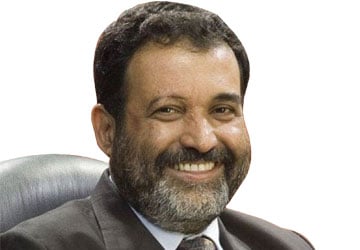 The slide has been breathtaking. On 4 December 2008, the Securities and Exchange Board of India’s (SEBI) cheerleaders were singing paeans to the ‘major step forward’ in improving transparency by publishing its board agenda and minutes on its website; and for the code of conduct it had formulated to avoid conflict of interest of its board members. The decision had been hailed as a ‘global first’. The irony is that it was the very day on which the Dr Mohan Gopal–V Leeladhar bench (constituted by the same board) had submitted three orders, indicting the National Securities Depository Limited (NSDL) for various lapses and omissions in the IPO scam of 2006, the DSQ Software case and the Rajrathnam matter. Three months later, the illusion of transparency was shattered with a Times of India report on how the orders of the Gopal-Leeladhar bench had been suppressed for three months. It took another year, and a public interest litigation (PIL) in the Andhra Pradesh High Court, for the orders to be released. And even that had a twist—the board simultaneously declared the orders as void or ‘non est’.
The slide has been breathtaking. On 4 December 2008, the Securities and Exchange Board of India’s (SEBI) cheerleaders were singing paeans to the ‘major step forward’ in improving transparency by publishing its board agenda and minutes on its website; and for the code of conduct it had formulated to avoid conflict of interest of its board members. The decision had been hailed as a ‘global first’. The irony is that it was the very day on which the Dr Mohan Gopal–V Leeladhar bench (constituted by the same board) had submitted three orders, indicting the National Securities Depository Limited (NSDL) for various lapses and omissions in the IPO scam of 2006, the DSQ Software case and the Rajrathnam matter. Three months later, the illusion of transparency was shattered with a Times of India report on how the orders of the Gopal-Leeladhar bench had been suppressed for three months. It took another year, and a public interest litigation (PIL) in the Andhra Pradesh High Court, for the orders to be released. And even that had a twist—the board simultaneously declared the orders as void or ‘non est’.
More controversy followed when Justice JS Verma, a highly respected former Chief Justice of the Supreme Court, opined that the board could not declare the orders void and only NSDL could challenge them in an appropriate legal forum. Then on 2 February 2010, Dr Mohan Gopal’s objections about the legality of the board’s actions were brushed aside and all charges against NSDL were dismissed. Yet, even those pliant newspapers that were privy to the decision mentioned that it was controversial because chairman CB Bhave headed NSDL when it was indicted. The manoeuvring has only destroyed SEBI’s credibility and a year later, nobody talks about its transparency, even though it diligently puts up the board agenda and its decisions on its website long after decisions are taken.
At 4.30pm on 3rd February, Mohandas Pai, who presided over the board meeting to exonerate NSDL, responded to my query about selective and sketchy leaks to the media saying, “The board met to consider this matter in a quasi-judicial role. The decision will be put up as an order on the web page (SEBI’s website). It is not a matter where press releases or press conferences are held.” On the contrary, Mr Pai, no judicial or quasi-judicial hearings ought to be held secretly and without an announcement, especially when they reflect on the chairman of a regulatory body. That is why court hearings happen in full public view, save in exceptional situations. Strangely enough, Mr Pai also took credit for SEBI having put up the three earlier orders, although they were declared ‘non est’, when it is well known that this happened due to the public interest litigation filed at Hyderabad. Obviously, better sense prevailed and the order was put up on the website the same evening. Meanwhile, we wonder if the SEBI board had any time to discuss the embarrassment of a manager being caught accepting a bribe of Rs25 lakh in Kolkata. A SEBI insider says the official had demanded Rs1 crore from a multi-level marketing company in what is an open-and-shut case of extortion, threat and acceptance of a bribe. But shouldn’t SEBI be examining what was the payoff or wrongdoing that commanded a price of Rs1 crore to suppress it?